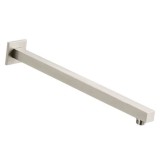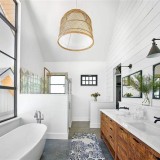Is Warm or Cool Light Better for the Kitchen?
Lighting plays a crucial role in creating a functional and inviting kitchen space. The type of light, whether warm or cool, can significantly affect the ambiance, visibility, and overall functionality of the kitchen. This article delves into the essential aspects to consider when choosing between warm or cool light for your kitchen, exploring their distinct characteristics and potential impacts.
Ambiance and Atmosphere:
Warm light, with its reddish-orange hues, evokes a cozy and inviting atmosphere. It is often used in residential settings to create a sense of warmth and intimacy. In the kitchen, warm light can make the space feel more homely and welcoming, especially during mealtimes. On the other hand, cool light, with its bluish-white tones, provides a more energizing and stimulating effect. It is commonly used in commercial settings and can enhance visibility and productivity.
Visibility and Task Lighting:
The choice of light temperature can also impact visibility and task lighting in the kitchen. Cool light, with its higher blue content, provides better contrast and clarity, making it ideal for tasks that require precision, such as food preparation and cooking. It helps to reduce eye strain and improves overall visibility. Warm light, while less suitable for task lighting, can be used as ambient lighting to create a more comfortable and relaxing atmosphere.
Color Rendering:
Another important aspect to consider is color rendering, which refers to how accurately a light source reproduces the colors of objects. Warm light, with its reddish tint, can alter the appearance of colors, making them appear warmer and less vibrant. Cool light, on the other hand, provides more accurate color rendering, making it a better choice for applications where color accuracy is essential.
Energy Efficiency:
Both warm and cool LED lights can be energy-efficient lighting options. However, cool light LED bulbs tend to be slightly more energy-efficient than warm light LED bulbs, emitting more lumens per watt of energy. This means that cool light LED bulbs can provide the same level of brightness while consuming less energy.
Conclusion:
The choice between warm or cool light for the kitchen depends on the desired atmosphere, task requirements, and personal preferences. Warm light creates a cozy and welcoming ambiance, while cool light enhances visibility and productivity. Both warm and cool LED lights offer energy-efficient lighting options, with cool light LED bulbs slightly more efficient. By considering these essential aspects, you can make an informed decision that optimizes the functionality and aesthetics of your kitchen lighting.

Do You Prefer Warm Cool Or Daylight Lighting For Your Kitchen

The Difference Between Warm And Cool Light A About Mint Lighting Design

Do You Prefer Warm Cool Or Daylight Lighting For Your Kitchen
.jpg?strip=all)
Warm White Vs Cool Light Bulbs Which Should You Choose Industville

The Difference Between Warm White Daylight Cool Led Bulbs Hut

The Best Type Of Kitchen Lighting Blog Jikoni Interiors

On The Kelvin Scale Soft White Light Is Below 3000 Warmer Between And 5000 Kelvi Cool House Designs Bathroom Lighting Design

Warm White Vs Cool Which Should You Choose Electrical2go

The Best Type Of Kitchen Lighting Blog Jikoni Interiors

Warm Vs Cool Lighting Tcp








